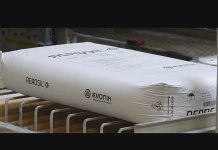Unlike the larger paper packaging industry, the Indian takeaway paper packaging segment is unorganized with no big recognizable players. Automation is hardly 2-3 years old in the sector and suppliers and buyers are still curating the best way to ensure consistent supplies.
Takeaway paper packaging essentially comprises paper bags, pulp-molded tableware, paper courier bags, paper cups & bowls, wrapping sheets, and food containers among others. The primary buyers are quick-service restaurant retail chains, quick commerce, eCommerce, home delivery services, and pharmacy chains.

According to Sushant Gaur, CEO of Adeera Pack— a paper-based product manufacturer in Greater Noida, to ensure a consistent supply of takeaway paper packaging, companies do long-term contracts that are usually based on stock-holding commitments and rate protocols.
“This is possible and needed because, in the West, most supplies are from overseas. So stock holding is a must to ensure uninterrupted supply. To hold stock, the players must have long-term commitments. This ‘need’ created a system that was a win-win for both the buyers and suppliers.”
In India, however, due to the abundance of suppliers, and comparatively shorter delivery timelines, leading to no requirement of stocking, buyers prefer to have a fluid relationship with suppliers, Gaur said. “Some companies have up to 18-20 suppliers of the same product. There is a reverse bidding to fix the supplier of the season.”
As takeaway paper packaging buyers mature and requirements grow in India, consistency should be the first parameter when choosing suppliers. That is when long-term contracts would come into play, Gaur explained.

“Having been in the industry for 13 years, MSMEs (micro, small & medium enterprises) regard large company contracts as decrees. However, buyers of takeaway paper packaging in India may not understand what terms and conditions are needed to keep the contracts realistic.
The primary requirement of a contract would be to ensure stable supply and predictable prices, which would make the suppliers do counter-contracts with paper mills, he said. “Paper mills in India do not have a high level of control on their raw materials and so they may not be able to accurately predict price movements under 10%,” he said.
What is needed to solve this issue, Gaur says, is a paper price index maintained by a neutral body whose only purpose is to objectively report historical price movements. “These movements can be used to do an escalator and a de-escalator contract where prices for the next quarter are fixed based on the price movements in the previous quarter. This should make a neutral playing field for all, where manufacturers only focus on consistency and efficiency and buyers do not have to look at new vendors every month to make sure their prices are updated.”










